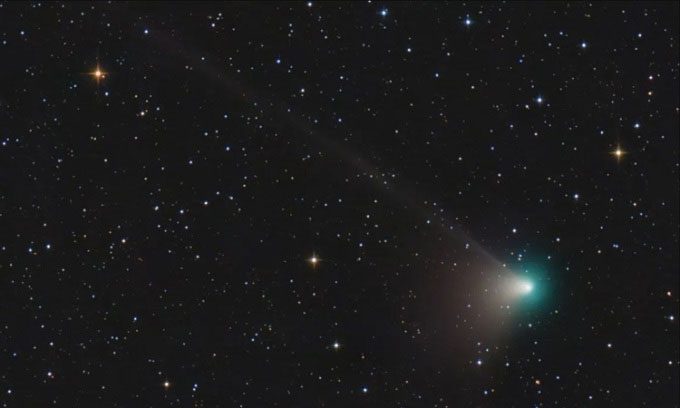Comet C/2022 E3 (ZFT) Can Be Seen with the Naked Eye During Its Closest Approach to Earth in January and February 2023 After 50,000 Years.

Comet C/2022 E3 (ZFT) captured by John Chumack. (Photo: John Chumack).
On January 7, photographer John Chumack from GalacticImages.com captured an image of Comet C/2022 E3 (ZFT) in the night sky over Yellow Springs, Ohio. According to Chumack, the comet is bright enough to clearly see its green head and tail. Astronomy enthusiasts can observe C/2022 E3 (ZFT) until February of this year.
Without a telescope, Comet C/2022 E3 (ZFT) may appear greener and fainter in the sky than it actually is. According to Space, it has two tails: a very long tail with a characteristic green color, as seen in recent photographs. The comet’s head also appears green due to the presence of dicarbon, a chemical consisting of two carbon atoms bonded together. This chemical process primarily occurs at the comet’s head.
According to NPR, comets are made up of frozen gas, rock, and dust. However, as they approach the Sun and warm up, they transform into cosmic objects that eject gas and dust, leading to their distinctive appearance with a bright, hot core and a long tail resembling flames. Comets typically produce two types of tails: one primarily made of gas and the other almost entirely formed from dust. The dust tail is more visible than the gas tail because dust reflects sunlight better. The gas tail is ionized by the Sun’s ultraviolet radiation, causing it to glow similarly to fluorescence.
C/2022 E3 (ZFT) was first discovered in 2022 by the Schmidt telescope at the Zwicky Transient Facility on Palomar Mountain. At that time, it was located in the constellation Aquila, five times farther from the Sun than Earth. Comet C/2022 E3 (ZFT) will be positioned in the constellation Camelopardalis on the evening of February 1.
According to NASA’s Jet Propulsion Laboratory (JPL), Comet C/2022 E3 (ZFT) has an orbital period of approximately 50,000 years. This means that before it comes within about 160 million kilometers of the Sun on January 12 and approximately 42 million kilometers of Earth on February 2, the last time it approached this close was during the Paleolithic era.


















































